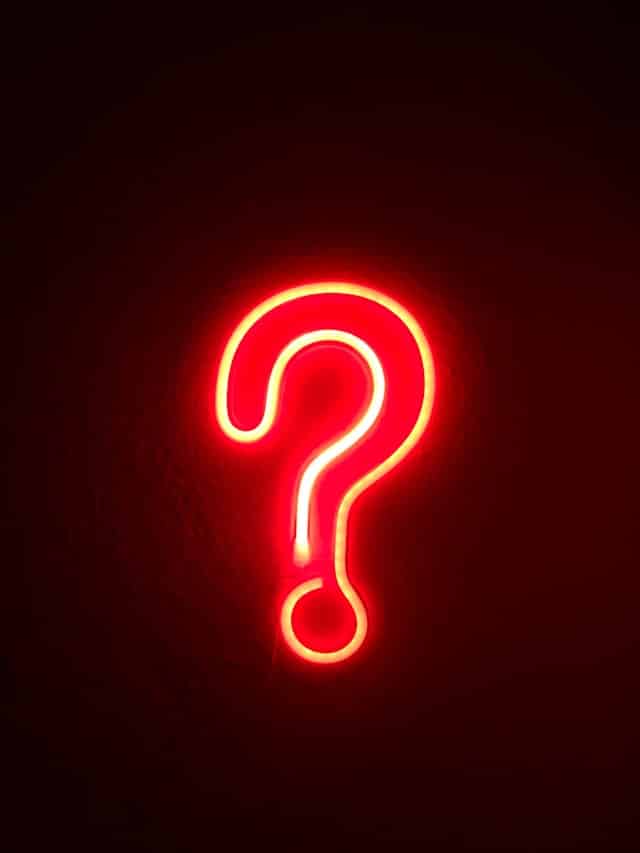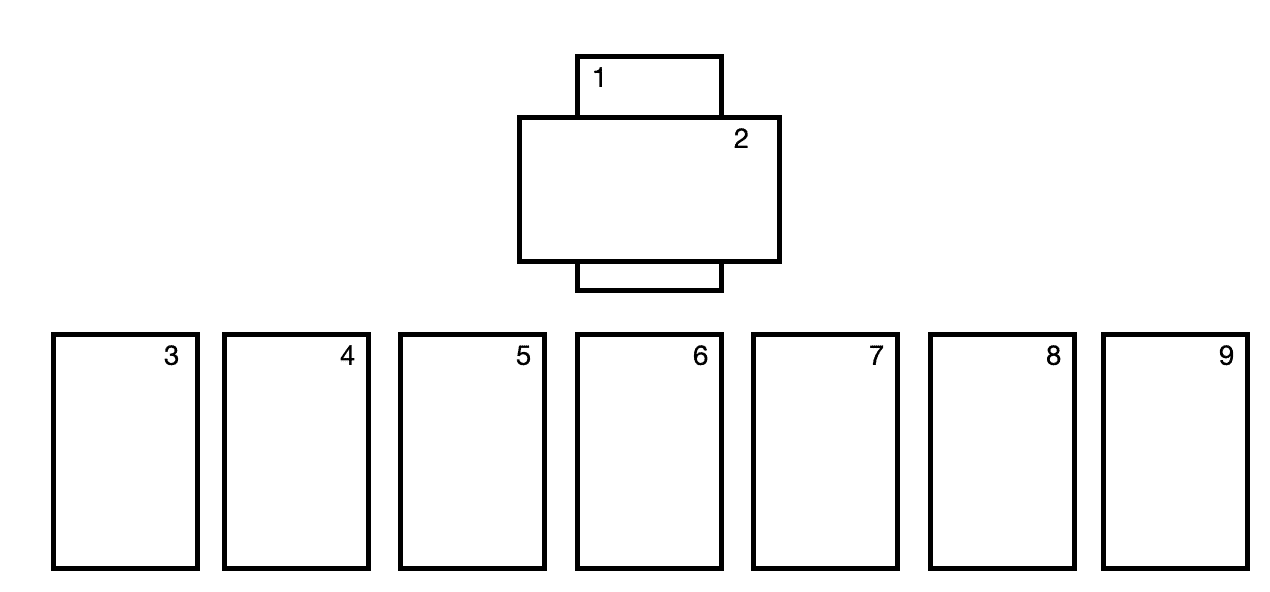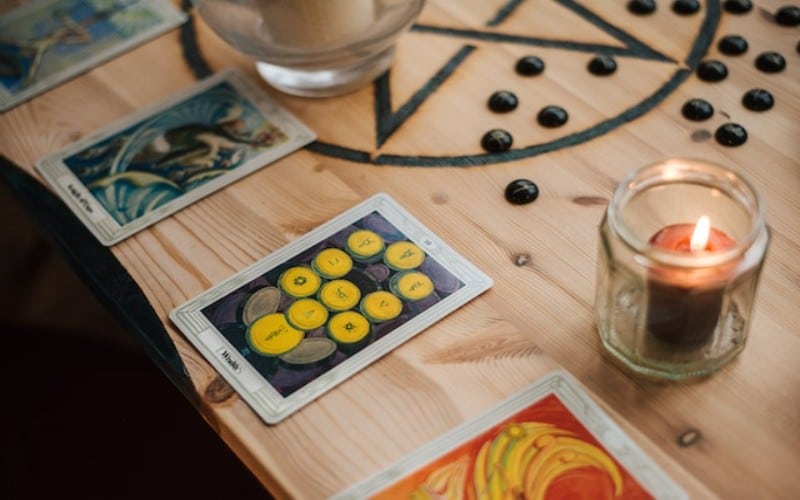Contrary to what you might expect from the “Work Cycle” name, this tarot spread isn’t only about your job or career. Instead, you can use this spread to access guidance about any topic.
In fact, the tarot writer Rachel Pollack designed this layout for querents who want more in-depth insight into what they should do about a specific situation, conflict, or question. But that situation could involve work, love, investments, creative goals, and anything in between! Pollack’s book Seventy-Eight Degrees of Wisdom is an excellent resource for the Work Cycle, especially if you’d like to explore examples.
However, I’m excited to share an overview and more about my own experience with this tarot spread below.
When to Use the Work Cycle

The Work Cycle is so named because it refers to the work that you need to do to resolve something or nurture personal growth. Sometimes, it also uncovers the work that you’re resisting. Pollack herself created this spread to provide clear advice, which makes the Work Cycle a little different from classic layouts like the Celtic Cross or the seven card Horseshoe. Although most spreads imply action, few are as directive as the Work Cycle.
Therefore, it’s best to use this spread to answer the question, “What should I do?” Then, the cards in this layout reveal actions you can take and different perspectives if needed. By peeling back layers of the situation, you eventually arrive at a deeper self-awareness.
This is why I believe that the core work of this reading is deeply spiritual. In other words, you can learn to speak with the divine parts of yourself that might be quieter than the noise of the world around you. That conversation with yourself is part of “the work.”
Layout of the Work Cycle Spread
Like the Celtic Cross, the Work Cycle begins with a small two-card cross. Rather than building a larger cross and staff, however, the Work Cycle proceeds with seven cards that rest in a horizontal row.
From there, you can choose your own adventure: either stop or pull as many seven-card rows as you believe are necessary to gain insight. After you do the math, you’ll notice that up to ten rows are possible!
Significance of the Shape
The sequence that makes this spread unique is the seven-card row structure. This shape is significant because it mirrors the phases of development that Rachel Pollack identifies in the Major Arcana.
For example, if you remove the Fool (which can belong anywhere), you’re left with 21 Major Arcana cards. You can then divide these into three phases of development, each sequence containing seven cards. Thus, the cards from the Magician to the Chariot represent the first phase of development, and so on.
Pollack’s three seven-card phases from the Major Arcana represent personal development (Magician through Chariot), development of self-awareness (Strength through Temperance), and spiritual development (Devil through World). In the Work Cycle, the rows of seven cards below the cross show that same progression—and you can also pull more than one row, depending on your needs.
The number seven is also fitting because it represents turning points, according to numerology. When you’re seeking advice, you’re often at a crossroads or need to make a decision. Thus, this spread helps you to make important changes for your growth.
Parts of the Spread
Before we explore the nitty-gritty of each card, consider the following general shapes:
- The cross includes the first two cards of the Work Cycle, similar to the Celtic Cross. Overall, this shape signifies the situation. For instance, you can view these two cards as representing a challenge or simply the central circumstances facing the querent.
- The first horizontal row is the work cycle itself and contains three key pieces of information: past influences, the necessary work, and the possible outcomes.
- Any additional horizontal rows reveal alternative perspectives or possibilities.
Understanding the “big picture” can help you remember where to find certain details when you’re interpreting tarot cards using this spread.
Meaning of Card Positions
Now, you’re ready to explore the significance of each individual card in the Work Cycle. To do this, you can refer to the diagram of the layout below.

In general, you can break the seven-card cycle row into three parts:
- Cards 3 and 4 represent the past.
- Cards 5 through 7 show the work.
- Cards 8 and 9 demonstrate aspects of the future.
But you can learn more about each individual card in the following table.
| Card | Card Keyword | Meaning |
| 1 | Situation | This card shows the heart of the matter. Pollack also emphasizes that this card implies being—in other words, what the current situation is or who the querent is within it. |
| 2 | Developments | In contrast with the first card, the second card signifies doing. For instance, it might show the querent’s own reactions or what someone else is doing to the querent. Although the card can represent a challenge, you can also see it more neutrally as a result of the situation. |
| 3 | Past: Experience | The first card of the cycle row shows past experiences that might be motivating the querent or influencing the situation. |
| 4 | Past: Expectations | Related to card 3, the fourth card shows the expectations that the querent has because of their past experiences. You might think of this card as the story the querent is telling themselves, whether it shows hope or fear or both. |
| 5 | Work: Others | Though you don’t need to assign specific meanings to each of the three work cards, Pollack notes that she did so at the beginning of her practice. Therefore, you can view this card as a representation of how others are influencing the querent’s current situation. |
| 6 | Work: Self | The central work card then shows how the querent is showing up, which might involve something they’re avoiding or their behaviors that have a positive impact. |
| 7 | Work: Events | Finally, the third work card shows the events that the querent must face or consider. |
| 8 | Future: Outcome | The final two cards mimic the being and doing of the initial cross. For instance, card 8 shows what the future is likely to be given the current internal and external influences. |
| 9 | Future: Result | Unlike the Celtic Cross, however, the Work Cycle breaks up the Outcome card into two cards. This ninth and final card of the first cycle shows the likely impact of the outcome on the querent. Specifically, how is the querent likely to react, or what are they likely to do, because of the outcome? |
Interpreting a Work Cycle Tarot Spread
You can see how the Work Cycle does more than describe the situation. In addition, it reveals the tools in your toolbox, as well as the dangers that might lie ahead.

More than most, this spread enhances certain card combinations as you interpret the patterns to determine what serves you and what hinders you.
Important Card Combinations
You can read the seven cards beneath the cross in groups:
- Together, cards 3 and 4 create a starting point for “the work.” Card 3 provides context for card 4, which is your personal narrative and its influence on the present. For instance, let’s say that card 4 is the Ten of Swords, a card of betrayal, and card 3 is the Six of Cups. Because the Six of Cups often represents family and nostalgia, you might discern that your role in your family of origin created a sense of yourself as a martyr that affects your current relationships.
- The work cards 5, 6, and 7 show tools that you can use or the challenges that you must overcome. These cards don’t represent definitive action or “fate” but rather possibilities and considerations to be aware of. Overall, the interaction of these three cards creates a story of the present.
- Finally, cards 8 and 9 interact to help you understand how the likely outcome affects you. Therefore, card 8 could appear to have a negative influence, but perhaps its overall effect is positive if card 9 represents a favorable impact or reaction.
You can also refer to other interactions between cards to learn more about how to empower yourself. Consider the following examples:
- If card 9 (Result) is confusing or unfavorable, review card 4 (Past: Expectations). How could a story from your past influence your reaction to a possible outcome?
- If you’d like more context for card 2 (Developments), review cards 5, 6, and 7 (Work). How do the current developments reflect the actions that you must take now?
- If cards 5, 6, and 7 (Work) seem mysterious, look to cards 3 and 4 (Past). Are you aware of how past events are affecting you?
- If card 8 (Outcome) is unfavorable, consider cards 5, 6, and 7 (Work). How does what you do or don’t do impact the outcome?
Interpreting Multiple Rows in a Work Cycle Spread
A key feature of the Work Cycle tarot spread is its open-ended design. For example, if an initial row is unclear or undesirable, you can pull an additional seven cards for a second row to provide deeper or clearer guidance. The meanings of the cards in the first row correspond with the meanings of the cards in the second row.
Pollack reminds us that each row represents a distinct perspective or possibility. Therefore, you can compare and contrast different rows to learn more about the current potential. If one row has a more favorable result or outcome, notice how the work cards differ because these differences might offer the key to a resolution.
Alternatively, if corresponding cards in each row have similar energies, these might be factors that you can’t control at this moment. For example, the past cards of each row could resemble each other if they represent fixed elements or events. But they might differ from one another when you’re invited to change your perspective or story about the past.
In summary, you can think of each row as a different way to tell a story about the situation. Which narrative resonates more with your heart? Which story offers solutions or outcomes that seem more accessible, intentional, or helpful? Though I’ve provided a few ways to compare and contrast the rows, you should use your own intuition to guide your interpretation.
Frequently Asked Questions (FAQs)
The Work Cycle tarot spread is less common than other spreads. As a result, you might have questions as you practice reading with this spread, and I’ve tried to anticipate some of the likeliest ones.
The Work Cycle provides advice about how to respond to a given situation. It can also offer insight into different perspectives or approaches.
Rachel Pollack documents the Work Cycle tarot spread in her book Seventy-Eight Degrees of Wisdom: A Tarot Journey to Self-Awareness. This text was first published in 1980 and includes tarot philosophy that has greatly influenced many tarot readers.
A significator represents the querent, and you choose it before you begin the formal reading. Although many tarot readers (including Rachel Pollack) use significator cards, you don’t need to. If you do choose a significator, you can consider factors like the querent’s astrological sign, gender, personality, and focus for the reading.
While many tarot spreads describe a situation, the Work Cycle provides clear action to take. Therefore, you should use it when you’re open to receiving guidance.
You can pull more than one seven-card row for the Work Cycle when the first row is confusing, contains conflicting influences, or reveals an undesirable outcome. Subsequent rows reveal alternatives to your current path that can empower you by providing options.
Yes! You can use the Work Cycle tarot layout to address any topic, including the popular subject of love.
Learn the Tarot with Online Flash Cards
Are you looking to dive into the world of tarot and master the meaning of each card? You should check out our post, “Learn The Tarot Cards – Online Flash Cards” by our own Tarot expert Ersa Fay. With interactive flash cards covering all 78 cards in the tarot, both the Minor and Major Arcana, you will learn key facts and the symbolism and meanings associated with each card.
By using these flash cards, you’ll become more comfortable with performing your own readings and enhance your journey into the world of tarot.
In the post, Ersa focuses on the iconic Rider-Waite-Smith tarot deck, known for its rich imagery and profound symbolism. The captivating illustrations in this deck draw from various sources such as mythology, astrology, alchemy, and the Kabbalah, creating a visual language that resonates deeply with the human psyche. So, if you’re ready to start learning, don’t miss out on this fantastic resource. We hope you find it useful and remember to have fun with it!

